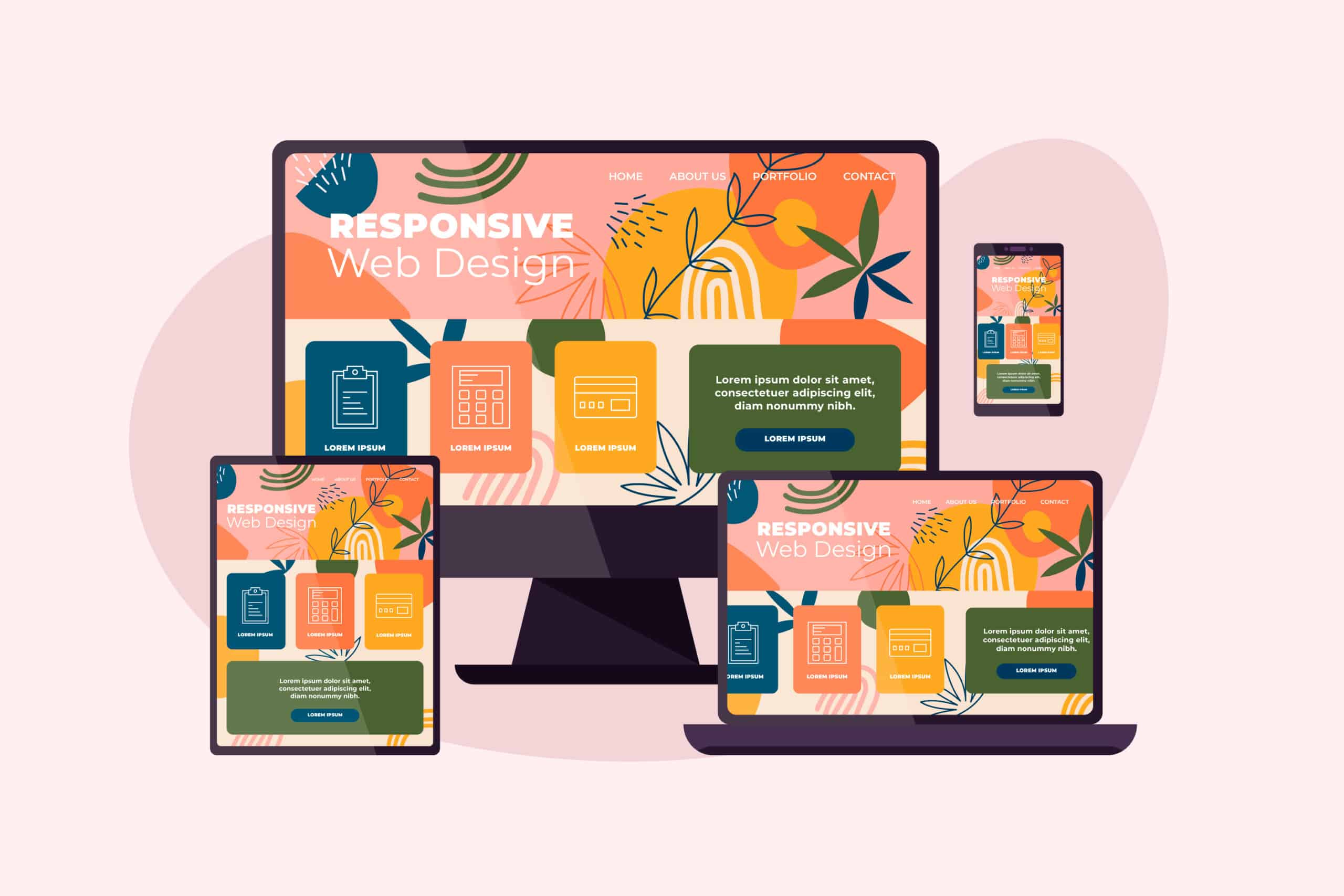Three years ago, Google did the unthinkable in a somewhat quiet announcement. The company did away with the desktop index for search results. From that point forward, all search results indexed and served in Google Search would be the page’s mobile version regardless of where a user accessed it.
The era of desktop internet had officially come to an end.
A brief panic ensued as businesses sought to clarify what this change meant. Could desktop versions of the site still exist? Would websites with desktop-only versions be de-ranked? Did designers need to create and maintain multiple website versions now that the mobile version was the only one that mattered?
The answer was something that had been around for a while. Still, marketers realized the usefulness of responsive design.
In this comprehensive guide, Dirxion will walk you through what responsive design is and why it’s so important.
What is Responsive Design?
Responsive design may sound like a scary technical term, but it’s a very straightforward concept. Responsive design is an approach to web design by which a web developer creates a singular website with the ability to adapt and scale to match the screen size and resolution of whatever device a user is viewing the site on.
Using a design element called media queries, web content like images, text blocks, font size, CSS styles and interactive elements will all scale to match the dimensions and orientation of a user’s browser window.
These design elements create a seamless user experience across all devices so your content and brand message stay consistent.
Responsive design is possible due to something called the fluid grid. All web design elements occupy screen real estate relative to their positioning on a grid.
In non-responsive web design, the grid is static, and the position, resolution and pixel width stay the same no matter which device a customer uses.
In Responsive design, grid elements can scale up or down depending on the viewport width of a user’s device.
Responsive design usually involves starting with a mobile-first design template, as most website users now prefer to view websites on mobile devices. Creation begins on small devices first, and adjustments scale up instead of down.
The Benefits of Responsive Design
In 2015, mobile responsiveness was a new approach to web design. Today, it’s essential to drive customers to your website or catalog and keep them from bouncing.
A Better User Experience
Responsive design creates a holistic user experience that keeps your messaging consistent across platforms.
With the advent of Google Analytics 4 came new ways of tracking users most people may have noticed by now: Cross-device traffic. As the data increasingly shows us, more and more users are beginning their searches on one sort of device but then switching to a different device to continue.
Responsive design is a way to ensure users get the same quality from you, no matter what. If a user decides to go from a tablet with a large screen size to a mobile phone with a smaller screen size, responsive design approaches make it less likely the user will leave your site and search for services elsewhere.
Fewer Management Costs
Web design is crucial to a business, especially if it does most of its business online through digital catalogs or e-commerce. However, hiring web designers can get expensive.
In the old Internet days, designers had to create a different website for every need. It was standard practice to create your desktop website first. After that, you would need to create an entirely separate website just for users on a mobile phone.
If your target market uses other devices like tablets, you would need to consider creating a third version of your website to cater to them.
With responsive design, creating, hosting and updating multiple websites is a thing of the past. All you need to do is create a user-friendly website with scaling functionality.
Thankfully, responsive designs have drastically reduced the cost of creating and maintaining websites, which is perfect if you’re running a small business and don’t have the funds for a big web design budget.
Better Search Engine Optimization
As mentioned, the standard practice nowadays is to start with a mobile-friendly website and work from there.
Mobile-friendliness is extremely important for SEO because Google made mobile-friendliness a ranking factor back in 2015.
Since then, Google has also indicated that websites with great user experience are ranked more highly in search.
Creating a responsive website hits two birds with one stone. Your website will be mobile-friendly, and the responsive design will create a better user experience. Today, responsive design is considered an absolute must for business.
Is Your Catalog Responsive?
In most cases, this question is pretty easy to answer. It is not responsive if your online catalog consists of a static PDF file.
Many free-ware DIY catalog makers are not responsive, either. Make sure you check the company website of anyone making a digital catalog for you to determine if their software creates responsive designs.
An excellent digital catalog isn’t just a list of your products; it’s also a critical touchpoint where users interact with your brand.
In many cases, an online catalog also serves as an e-commerce platform. The last thing you want is users clicking into your catalog only to be unable to read it because it’s not responsive.
A few hundred pixels can differentiate between “sale” and “sayonara.” You owe it to yourself and your business to get digital catalogs that work for you instead of against you.
Dirxion is the King of Responsive Catalogs
For those of you who already have a Dirxion B2B or retail catalog, there’s just one thing you need to do to ensure your catalogs are responsive: Nothing.
That’s right. At Dirxion, we aim to create a seamless, branded, custom browsing and buying experience for your customers that makes them want to purchase from you. That’s why our catalog designs have responsiveness baked in from the start.
For those of you who aren’t using a Dirxion product catalog, we’ve got good news for you, too. We’re the catalog experts for a reason. Our in-house development staff has decades of experience creating custom catalogs to suit any business’ needs.
If you have something unique you want to try in your catalog, say the word, and more likely than not, we’ll be able to make it happen.
Our catalogs offer built-in analytics so you know what your customers are searching for and how to best cater to them. To top it all off, we even offer hosting services for your catalog, so you don’t have to lift a finger.
Does it sound like the sort of thing your website could use? Dirxion is only a call or click away.
Contact us today and let’s create a digital, responsive catalog that will wow your customers.










